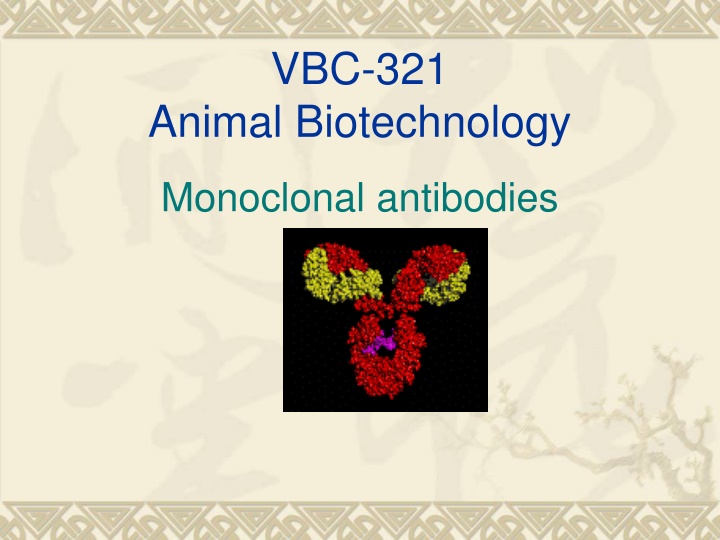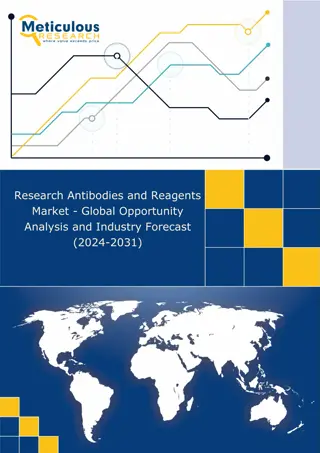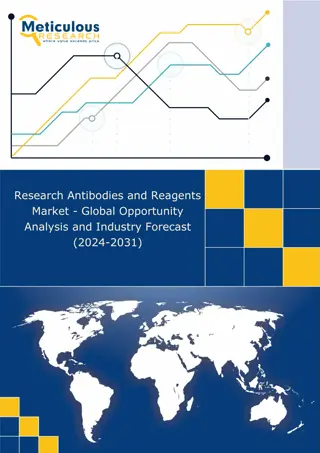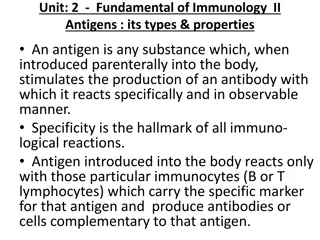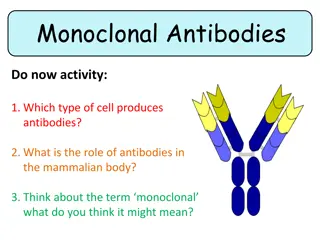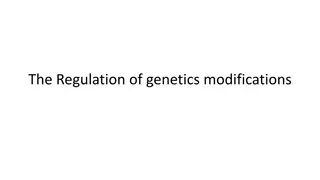Monoclonal Antibodies in Animal Biotechnology
Monoclonal antibodies (mAb) play a crucial role in identifying and neutralizing foreign substances in the body. This article delves into the significance of monoclonal antibodies, their structure, development history, and the revolutionary hybridoma technology. Explore the world of antibodies and their impact on biochemistry, molecular biology, and medicine.
Download Presentation

Please find below an Image/Link to download the presentation.
The content on the website is provided AS IS for your information and personal use only. It may not be sold, licensed, or shared on other websites without obtaining consent from the author.If you encounter any issues during the download, it is possible that the publisher has removed the file from their server.
You are allowed to download the files provided on this website for personal or commercial use, subject to the condition that they are used lawfully. All files are the property of their respective owners.
The content on the website is provided AS IS for your information and personal use only. It may not be sold, licensed, or shared on other websites without obtaining consent from the author.
E N D
Presentation Transcript
VBC-321 Animal Biotechnology Monoclonal antibodies ?
antibody An antibody is a protein used by the immune system to identify and neutralize foreign objects like bacteria and viruses. Each antibody recognizes a specific antigen unique to its target. Monoclonal antibodies (mAb) are antibodies that are identical because they were produced by one type of immune cell, all clones of a single parent cell. Polyclonal antibodies are antibodies that are derived from different cell lines. Isotypes According to differences in their heavy chain constant domains, immunoglobulins are grouped into five classes, or isotypes: IgG, IgA, IgM, IgD, and IgE.
Monoclonal Antibodies Monoclonal antibodies (mAb) are antibodies that are identical because they were produced by one type of immune cell, all clones of a single parent cell Given (almost) any substance, it is possible to create monoclonal antibodies that specifically bind to that substance; they can then serve to detect or purify that substance This has become an important tool in biochemistry, molecular biology and medicine
The structure of antibodies http://www.path.cam.ac.uk/~mrc7/igs/mikeimages.html
History of Mab development 1890 Von Behring and Kitasato discovered the serum of vaccinated persons contained certain substances, termed antibodies 1900 Ehrlich proposed the side-chain theory 1955 Jerne postulated natural selection theory. Frank Macfarlane Burnet expended. Almost the same time, Porter isolated fragment of antigen binding (Fab) and fragment crystalline (Fc) from rabbit y-globulin. 1964 Littlefield developed a way to isolate hybrid cells from 2 parent cell lines using the hypoxanthine-aminopterin-thymidine (HAT) selection media. 1975 Kohler and Milstein provided the most outstanding proof of the clonal selection theory by fusion of normal and malignant cells. This resulted in the first monoclonal antibodies, for which they received the Nobel Prize in 1984.
Hybridoma technology It is technique of producing hybrid cell lines called hybridomas by the fusion of fusing a specific antibody-producing lymphocyte B cell with a myeloma cell that has an ability to grow in tissue culture Hydridoma produce antibodies produced that have single specificity and are called monoclonal antibodies. This technique was discovered Georges Kohler of West Germany, Cesal Milstein of Argentina and Niels Jerne of Denmark in 1975. They were awarded Nobel Prize for Physiology and Medicine the 1984
Principal This is based on fusion between myeoma cell (malignant plasma cell) and spleen cell from suitable immunised animal. Spleen can produce antibody but die in short period under culture condition Myeloma cell are adapted to grow permanently in cell culture Myeloma cells cannot synthesize antibodies as they lack HGPRT gene required for the synthesize the enzyme, hypoxanthine guanine phosphoribosyl transferase (azaquinine resistant) or thymidine kinase (bromodeoxy uridine resistant) Mutant myeloma cell can not grow in HAT (Hypoxanthine Aminopterin Thymidine) medium Only hybrid cell can grow in HAT medium and produce monoclonal antibody
Method Immunization of a mouse Isolation of B cells from the spleen Cultivation of myeloma cells Fusion of myeloma and B cells Separation of cell lines Screening of suitable cell lines in vitro (a) or in vivo (b) multiplication Harvesting 1. 2. 3. 4. 5. 6. 7. 8.
Immunization of a mouse Immunize a rabbit through repeated injection of a specific antigen for the production of specific antibody, facilitated due to proliferation of the desired B cells Produce tumors in a mouse or a rabbit Culture separately the spleen cells that produce specific antibodies and the myeloma cells that produce tumors
Fusion Fusion of spleen cells to myeloma cells is induced using polyethylene glycol (PEG), to produce hybridoma Hybridomas are grown in selective hypoxanthine aminopterin thymidine (HAT) medium. HAT medium contains a drug, aminopterin that blocks one pathway for nucleotide synthesis, making the cells dependent on another pathway that needs HGPRT enzyme, which is absent in myeloma cells. Myeloma cells that do not fuse with B cells will die. B cells that do not fuse will also die because they lack tumorigenic property of immortal growth.
Selection and Storage Select desired hybridoma for cloning and antibody production Prepare single cell colonies that can grow and use them to screen of antibody producing hybridomas Only one in several hundred cell hybrids will produce antibodies of the desired specificity Culture selected hybridoma cells for the production of monoclonal antibodies in large quantities Hybridoma cells can be frozen for future use or can be injected in the body of an animal, so that antibodies will be produced in the body and recovered later from the body fluid.
